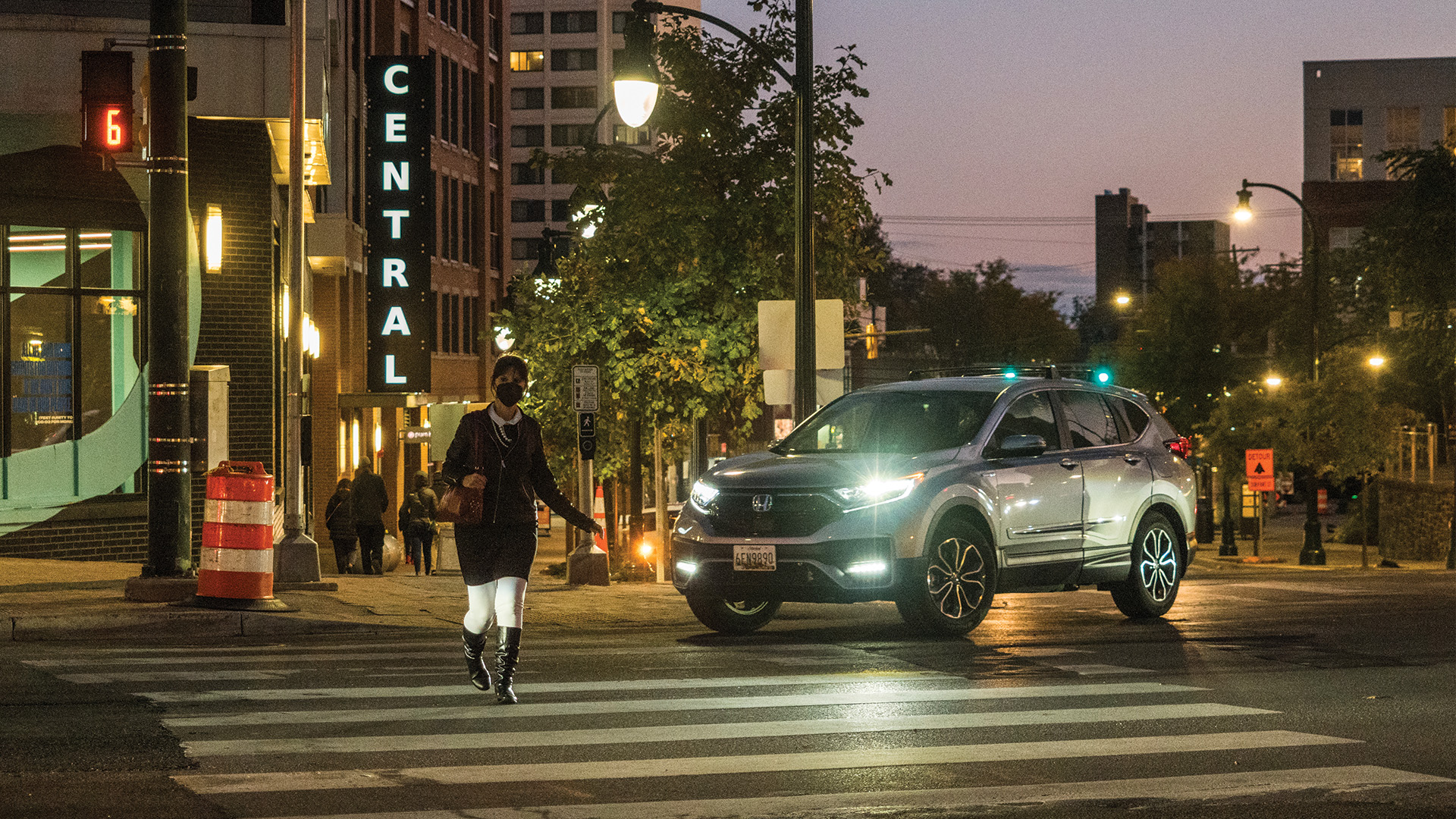
Community invited to testify on Montgomery Planning’s first draft of groundbreaking plan to foster safer, more comfortable, and more accessible pedestrian conditions in Montgomery County
WHEATON, MD – The Montgomery County Planning Board, part of The Maryland-National Capital Park and Planning Commission (M-NCPPC), will hold a public hearing Thursday, March 23, 2023 at 6 p.m. on the Montgomery County Planning Department’s Pedestrian Master Plan, which is the county’s first comprehensive master plan to improve the pedestrian experience countywide. The public is invited to provide testimony in-person or virtually.
Read the Public Hearing Draft of the Plan
“This is the first time we have had a master plan focused solely on making walking or rolling around the county safer, more accessible, equitable, and comfortable for all residents,” said Acting Planning Director Tanya Stern. “This plan is major step towards supporting Thrive Montgomery 2050’s vision of Complete Communities and offering more ways for residents to travel safely without having to drive everywhere.”
The Pedestrian Master Plan public hearing date was set following a Montgomery Planning briefing on the draft plan to the Planning Board at its weekly meeting today.
“The Public Hearing Draft is the culmination of several years of public engagement, data collection, and best-practices research from Montgomery Planning Staff,” said Project Lead Eli Glazier. “The community’s perspective is critical to make this plan work for every pedestrian, and we look forward to continue working with residents, business owners, and other interested pedestrians to gather ideas, questions, and concerns as this plan progresses.”
More About the Plan
The Pedestrian Master Plan is Montgomery Planning’s first comprehensive vision to create safer, more comfortable experiences walking or rolling around Montgomery County, and to make getting around more convenient and accessible for every pedestrian. It helps to implement Thrive Montgomery 2050– the recently adopted General Plan—the county’s Vision Zero action plan, and the county’s Climate Action Plan.
Pedestrian comfort while walking or rolling (with a mobility device) in the county can vary greatly depending on where you are. Some roads and intersections are safer and more accessible than others. To encourage more walking and to ensure a less stressful traveling experience, Montgomery Planning initiated the Pedestrian Master Plan to address the issues pedestrians face in Montgomery County.
Since work began on the Pedestrian Master Plan in fall 2019, Montgomery Planning has held numerous in-person and virtual community engagement events and activities, designed, and distributed a survey to 60,000 households, and collected and analyzed commute and crash data to have a deeper understanding of the issues important to pedestrians of all backgrounds, ages, and types of mobility.
The Pedestrian Master Plan provides detailed, actionable recommendations in line with national and international best practices to improve the pedestrian experience. The plan’s vision is supported by four goals:
- Increase walking rates and pedestrian satisfaction
- Create a comfortable, connected, convenient pedestrian network
- Enhance pedestrian safety
- Build an equitable and just pedestrian network
Download a Pedestrian Master Plan pamphlet to print out and share.
Draft Plan Recommendations
To address the issues identified through the community engagement and data collection effort, the draft Pedestrian Master Plan’s detailed recommendations focus on how the county can systemically improve the pedestrian experience.
Design, Policy, and Programming recommendations will change how pedestrian amenities are designed and constructed, update the policies that guide transportation engineering in the county, and leverage opportunities for more robust traffic safety education and policy change at the state level. Examples include longer crosswalk times for residents of all ages and abilities, sidewalks that are more accessible, especially for people with mobility issues, updated lighting standards, exploring taking county control of certain state highways, and reimagining Safe Routes to School programming.
Pedestrian and Bicycle Project Prioritization recommendations identify where pedestrian and bicycle capital improvement projects should be prioritized countywide, based on equity, comfortable access, safety, and other metrics.
Pedestrian Shortcut Identification recommendations specify locations where public or private investment could shorten pedestrian trips and make the overall pedestrian network more accessible by improving dirt paths and other informal connections that have developed over time.
Country Sidepath Identification recommendations indicate where sidepaths—shared pedestrian and bicycle pathways—should be built along roadways in the more rural parts of the county, in line with guidance in the Complete Streets Design Guide.
Complete Streets Design Guide Area Type Classification recommendations advance the transition to new road classifications to ensure that as streets are reconstructed in the years ahead, they will be more pedestrian-friendly.